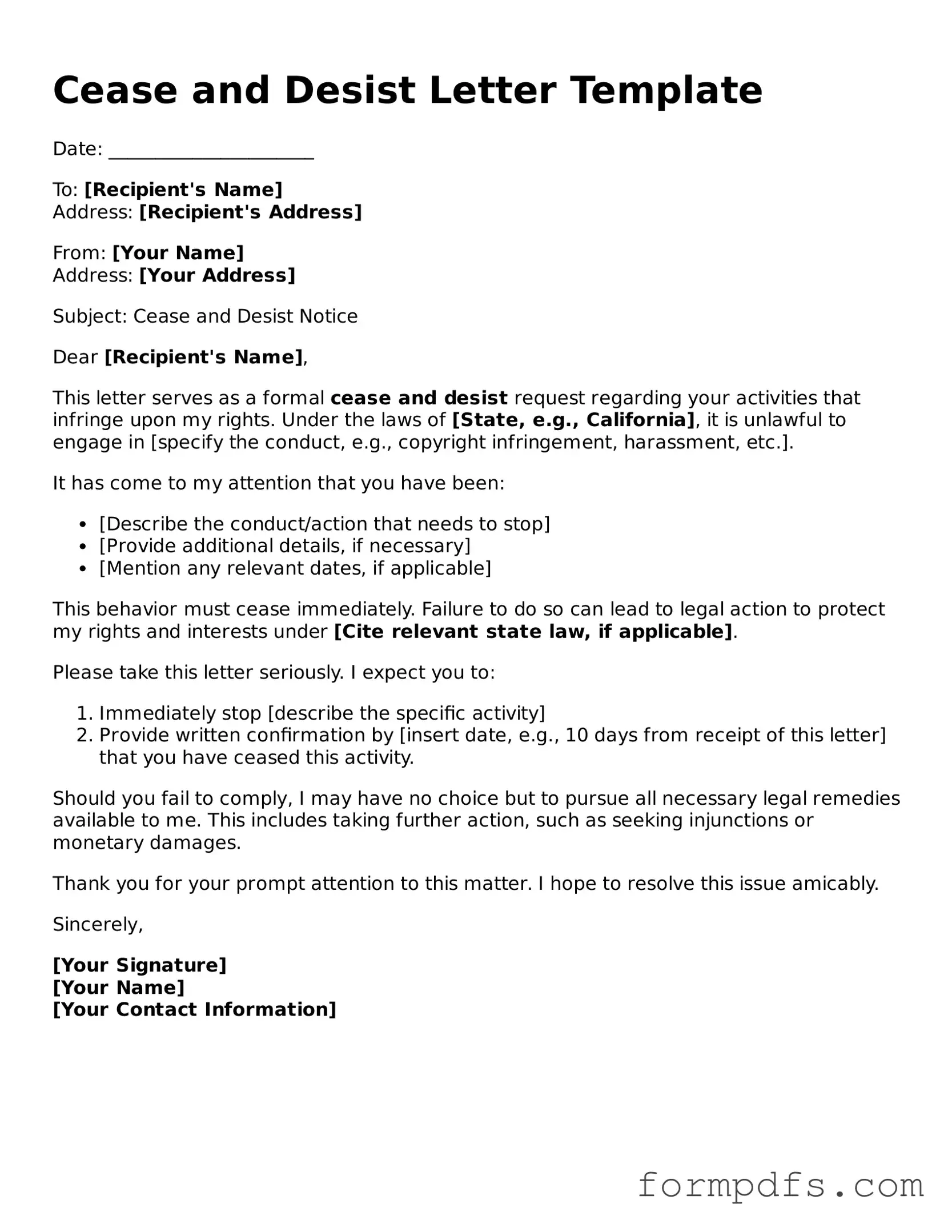What is a Cease and Desist Letter?
A Cease and Desist Letter is a formal request for an individual or organization to stop engaging in a specific activity that is believed to infringe on someone's rights or cause harm. This letter serves as a warning that legal action may follow if the recipient does not comply. It is often used in situations involving copyright infringement, trademark disputes, or harassment. The letter outlines the offending behavior and provides a clear directive to cease such actions immediately.
When should I use a Cease and Desist Letter?
You should consider using a Cease and Desist Letter when you believe your rights are being violated or when someone is engaging in behavior that is harmful to you or your business. For instance, if someone is using your trademark without permission or if a neighbor is encroaching on your property, this letter can be an effective first step. It is often a less confrontational way to address the issue before resorting to litigation.
How do I draft a Cease and Desist Letter?
Drafting a Cease and Desist Letter involves several key components. Start by clearly identifying yourself and the recipient. Specify the behavior that needs to stop, providing details and evidence if possible. Clearly state the legal grounds for your request, and include a deadline for compliance. It’s also wise to mention the potential consequences of not complying, such as legal action. Finally, keep the tone professional and assertive, but avoid aggressive language.
Can I send a Cease and Desist Letter without a lawyer?
Yes, you can send a Cease and Desist Letter without a lawyer. Many individuals choose to draft and send these letters on their own, especially for straightforward issues. However, it may be beneficial to consult with a legal professional if the situation is complex or if you anticipate a strong response from the recipient. A lawyer can help ensure that your letter is properly worded and that your rights are adequately protected.
